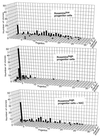Redox state is a central modulator of the balance between self-renewal and differentiation in a dividing glial precursor cell
- PMID: 10944195
- PMCID: PMC27662
- DOI: 10.1073/pnas.170209797
Redox state is a central modulator of the balance between self-renewal and differentiation in a dividing glial precursor cell
Abstract
We have discovered that intracellular redox state appears to be a necessary and sufficient modulator of the balance between self-renewal and differentiation in dividing oligodendrocyte-type-2 astrocyte progenitor cells. The intracellular redox state of freshly isolated progenitors allows prospective isolation of cells with different self-renewal characteristics. Redox state is itself modulated by cell-extrinsic signaling molecules that alter the balance between self-renewal and differentiation: growth factors that promote self-renewal cause progenitors to become more reduced, while signaling molecules that promote differentiation cause progenitors to become more oxidized. Moreover, pharmacological antagonists of the redox effects of these cell-extrinsic signaling molecules antagonize their effects on self-renewal and differentiation, indicating that cell-extrinsic signaling molecules that modulate this balance converge on redox modulation as a critical component of their effector mechanism.
Figures




References
-
- Bertoncello I, Hodgson G, Bradley T. Exp Hematol. 1985;13:999–1006. - PubMed
-
- Mulder A, Visser J. Exp Hematol. 1987;15:99–104. - PubMed
-
- Reid L. In: Textbook of Tissue Engineering. Lanza R, Langer R, Chick W, editors. Austin, TX: Landes; 1996.
-
- Kim M, Cooper D, Hayes S, Spangrude G. Blood. 1998;91:4106–4117. - PubMed
-
- Miller R H, French-Constant C, Raff M C. Annu Rev Neurosci. 1989;12:517–534. - PubMed
Publication types
MeSH terms
Substances
LinkOut - more resources
Full Text Sources
Other Literature Sources
Medical

